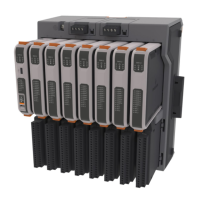Site Considerations for Equipment Installation, Grounding, and Wiring Manual
D301452X012
October 2019
Lightning Arresters and Surge Protectors 23
▪
Ensure that all above-ground interconnect runs have minimum radius bends of eight inches,
run away from other conductors, and use large solid wire or a solid strap.
▪
Watch out for dissimilar metals connections and coat accordingly.
▪
Use bare wire radials together where possible with ground stakes to reduce ground system
impedance.
▪
Use I/O protectors (phone line, radio) with a low-inductance path to the ground system.
▪
Ground the coaxial cable shield (or use an impulse suppressor) at the bottom of the tower just
above the tower leg ground connection.
4.2 Use of Lightning Arresters and Surge Protectors
Units equipped with radios or modems use lightning arresters and surge protectors to protect
equipment from lightning strikes, power surges and from damaging currents that have been
induced onto communication lines.
Lightning arresters are the first line of defense. These devices typically use gas discharge bulbs that
can shunt high currents and voltages to earth ground when they fire. The high-current, high-
voltage gas discharge bulb has a relatively slow response time and only fires when high voltage
ionizes the gas.
Surge protectors are the second line of defense. These are solid state devices which fire very
quickly and conducts low voltages and currents to ground. Surge protectors are built into some
modems.
Apply lightning arresters to circuits as follows:
▪
Equipment or circuits that can be exposed to lightning strikes, falling power lines, high ground
currents caused by power system faults, by operational problems on electric railways, etc.
▪
Equipment installed in dry, windy areas, such as the Great Plains and the Southwest Desert in
the United States. Wind and windblown dust can cause high voltages (static) to appear on
overhead wires, fences, and metal buildings.
Note
Lightning arresters may explode if a lightning strike is very close. Mount lightning arresters where
flying parts will not cause injury to equipment or personnel.
4.2.1 Installing Lightning Arresters and Surge Protectors
▪
Install lightning arresters external to equipment cabinets, racks, or buildings.
▪
Each lightning arrester requires a separate ground connection to the nearest available earth
ground. Use the manufacturer’s specified wire size.

